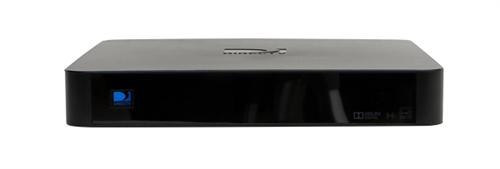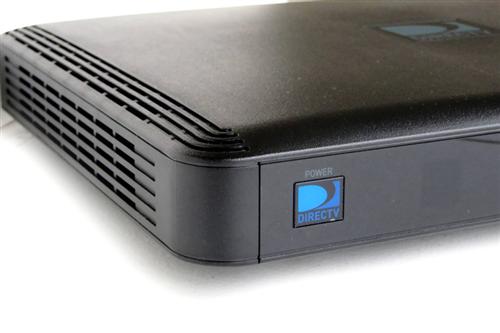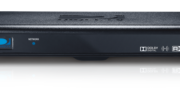In a recent article, I pointed out my three part series on DIRECTV DVRs. Here are links to those articles in case you’re curious.
The history of DIRECTV DVRs part 1: Prehistory
The history of DIRECTV DVRs, part 2: From Zero to Hero
The history of DIRECTV DVRs, part 3: The Genie is out of the bottle
That article series stops in 2015, however, and I thought It might be fun to take a look at the changes that have taken place since.
H44: The Genie that was not to be

Shortly after I posted those articles, the DIRECTV Genie Lite was introduced. The H44 Genie Lite was a receiver, in theory anyway. It was really the same mainboard as a Genie DVR, just without the hard drive. I reviewed it when it came out. The idea was that it would be placed into new customer homes along with clients and then could be converted to a DVR by adding an external hard drive.
The hardware was solid, but there was never a real marketing push for this product. Instead, new customers got a Genie DVR and clients. Since you couldn’t add this receiver onto an account that already had a Genie, it was hard to know who would really want it. Plus, it used 5 tuners on a multiswitch even when being used as a single-tuner receiver. That made it hard to fit into an upgrade scenario.
HR54: The 4K Genie DVR

The HR54 DVR was the next evolution of the DIRECTV Genie concept. It was actually simpler and less expensive to make than the HR44. It got rid of the touch panel on the front and its smaller mainboard (shared with the H44) was easier to cool, meaning it was more reliable over time.
While the HR44 did have the ability to record 4K programs, it did not have the ability to receive reverse band programs or use transponder bonding. These two capabilities enabled HDR broadcasts, which are still fairly new and rare as this article is being written.
Neither this DVR nor the earlier HR44 were able to actually output 4K, which was a fairly controversial move. It wouldn’t have taken a lot of space to build in a 4K output but it would have increased the energy usage of the unit, possibly removing the Energy Star certification.
HR54s are still available, and are the only Genie DVRs that can be activated on an existing DIRECTV satellite system without removing all the other hardware.
Genie 2: The Next Generation

The AT&T Genie 2 is the first truly revolutionary product since the original Genie back in 2011. Debuting in late 2017, it upended everything people expected from DIRECTV satellite. Some fell in love at first sight, and some still haven’t embraced it.
The HS17 is a “headless server” meaning it has no video output and does not respond to remote commands. It handles reception and recording and lets the Genie clients handle the display.
The specs are impressive: 2TB hard drive, three simultaneous 4K streams, 7 total rooms of TV, and 7 usable tuners. Like the HR54 it can use transponder bonding to receive HDR broadcasts. It uses less power and is more efficient than any other DVR before it.
HS17 is also designed to reduce clutter. Working from capabilities first shown on the HR54, it has the ability to power a dish without a power inserter. It supports wireless clients without a separate video bridge, and connects to your home network over wired or wireless networking without a Cinema Connection Kit. It’s designed to be the easiest DIRECTV system to install.
Just one thing…
In order to simplify installations, AT&T has mandated that Genie 2s can only be used in homes where there is no other DIRECTV equipment. In upgrade situations, all the receivers are removed and clients are put in. This makes installs easier because you never need a multiswitch. However it did make some people with larger homes a little unhappy. AT&T elected to continue making the HR54 available for those installations.
Farewell RVU
One of the early promises of the Genie system was that you wouldn’t even need a client box. The first “DIRECTV-Ready” TVs were available in 2012, although they wouldn’t be called that for a few years. The code for the Genie client is withing the TV. This should have made a lot of people happy, but there were issues from day one. You couldn’t use the TV’s built-in Wi-Fi and you always had to use a DECA to connect coax to ethernet to go into the TV. Add to that, the TVs were always a generation behind the clients and often ran more slowly, at least in early years.
With very few people using the built-in clients, AT&T stopped certifying new TVs for the DIRECTV Ready program in 2017. They still support older TVs.
Will this be the last of the DIRECTV receivers?
There’s a rumor that AT&T is done with hardware. It’s been suggested that in the future, the DIRECTV client will be an app on a streaming box. I don’t know if that’s true but I can tell you that the engineers at AT&T’s El Segundo skunk works continue refining the software and adding little improvements. That hardly seems like a system that’s headed for the trash heap. The satellite fleet will be viable for at least another 10-15 years, and it seems very unlikely that the ground-based equipment won’t evolve.





